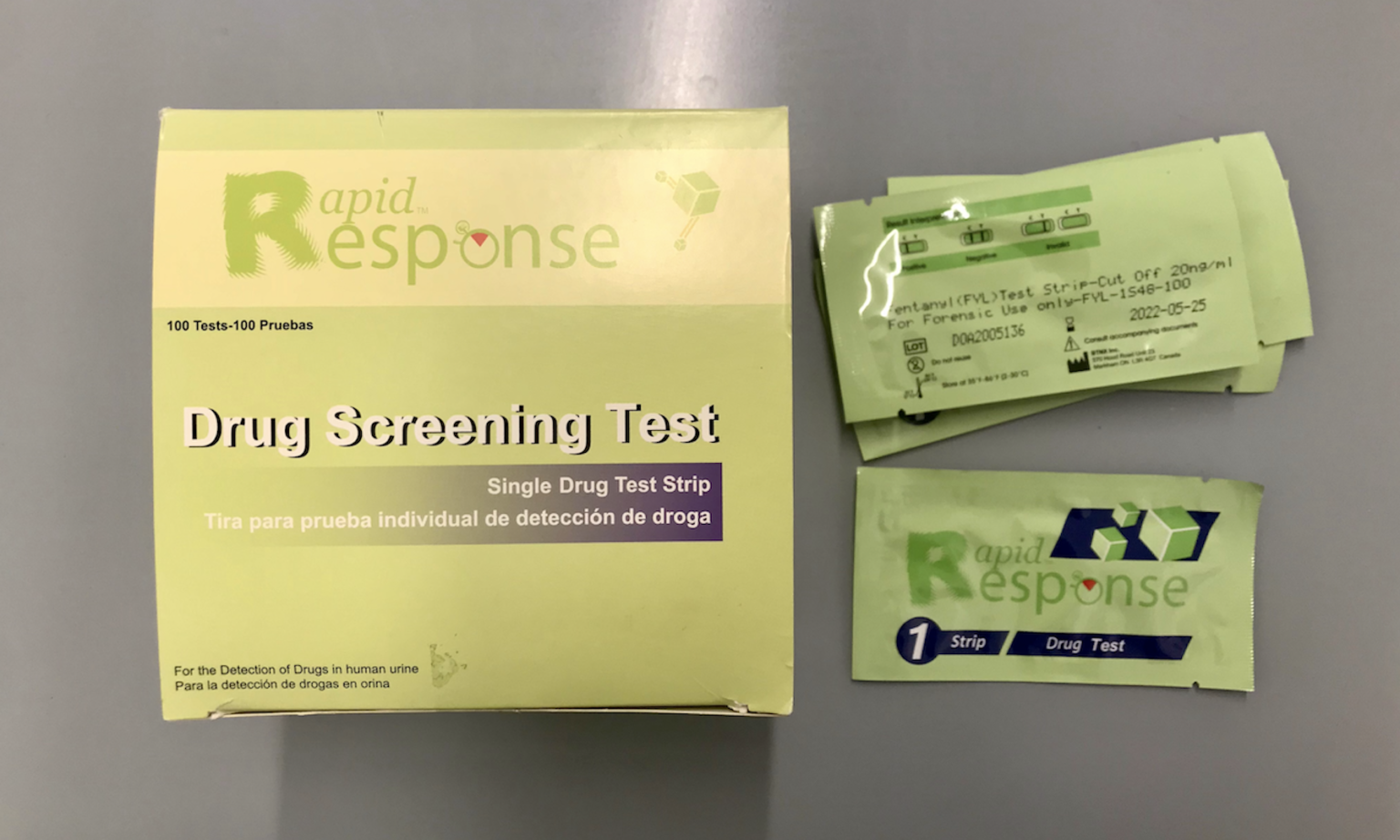Ohio lawmakers are—slowly—considering legislation to decriminalize fentanyl test strips. On May 19, state Representative Kristin Boggs (D) testified before the House Criminal Justice Committee in support of House Bill 456, which she first introduced in October 2021. Meanwhile, state Senator Nathan H. Manning (R) introduced Senate Bill 296 in February 2022, which would both decriminalize “narcotic testing products” and expand access to naloxone. It hasn’t yet moved out of the Senate Health Committee.
Besides preventing arrests and therefore encouraging use of fentanyl test strips, the bills would also effectively allow federal funds to be spent on their distribution in Ohio.
Fentanyl test strips (FTS) are a harm reduction tool that enable people to quickly and easily detect whether or not fentanyl is present in their drugs. The potent synthetic opioid is widespread as an adulterant in illicit drug supplies—particularly those sold as heroin, but also many others. The high risk of consuming fentanyl unawares means that FTS can provide lifesaving information. Yet while FTS are nothing more than safety devices, current law in Ohio—as in a number of other states—classifies them as “drug paraphernalia.” Possession may carry a fourth-degree misdemeanor, with penalties of up to 30 days in jail and a $250 fine.
An aide for Rep. Boggs informed Filter that HB 456 will get its next hearing on May 25, and must pass by December 31 to be approved this session. Sydney Sauer, director of operations for the Safety, Outreach, Autonomy, Respect (SOAR) Initiative, told Filter that of the two bills, SB 296 is stronger in that it immunizes any “narcotic testing product” including FTS, while HB 456 only protects FTS. The distinction matters because if and when another drug replaces fentanyl as an adulterant, criminal statutes should make it clear that any testing equipment is protected.
All the same, harm reduction advocates reached by Filter suspect that HB 456 is more likely than SB 296 to advance this year because it’s simpler: It just removes FTS from the state’s drug paraphernalia statutes.
“Some of the more rural police forces have been using it as a reason to search somebody or assume they are committing a crime.”
“There’s never been a single prosecution for fentanyl test strips in Ohio, to my knowledge,” AmandaLynn Reese, director of outreach and engagement for Harm Reduction Ohio, told Filter. “Have they been used as cause to search and seize? Yes, anecdotally. I have not seen anything on record that because someone had FTS they were harassed by police or got some type of charges.”
Reese added that in larger urban areas like Hamilton County (Cincinnati) and Franklin County (Columbus), distribution of FTS is “known and encouraged” by law enforcement.
But, she continued, “when I hear from people who use drugs in Claremont County for instance, some of the more rural police forces have been causing harm with it, using it as a reason to search somebody or assume they are committing a crime.”
Provisional data released this month by the Centers for Disease Control and Prevention (CDC) showed that of almost 108,000 drug-related deaths across the United States in 2021, 71,200 people are estimated to have died from overdoses involving fentanyl or its analogs. In 2016, fentanyl became the drug involved in the highest number of overdose deaths, and that trend has only worsened each year since.
Ohio has suffered especially. Over 5,400 residents are estimated to have died of overdose in 2021—the worst death toll in the state’s history, for the second year in a row. Adjusted for population, that places Ohio among the 10 states worst impacted by the crisis.
Decriminalizing FTS is a simple way to encourage more people to use a tool that saves lives—even if harm reductionists point out that they’re often more helpful to casual drug users (opioid-naive people consuming pills, for example) than they are to experienced opioid users.
“A lot of people in chaotic drug use or poly-drug users are aware that fentanyl is in our adulterated system, and they might be using fentanyl on purpose,” Reese explained, “versus these other groups of folks we’re talking about that may not have the intention of using fentanyl.”
A 2019 study published in the Harm Reduction Journal found that when a group of adult drug users were given their own FTS to use at home, 87 percent reported using them at least once. Most found FTS easy and simple to use, and some adopted new behaviors to protect themselves as a result—like using among friends, keeping the overdose-reversal drug naloxone or discarding their drugs.
“It’s really important we’re able to unlock that public funding for these, which cannot be funded currently because they’re considered drug paraphernalia.”
Decriminalization in Ohio would also mean that the state could pay to distribute FTS. In April 2021, the federal CDC and the Substance Abuse and Mental Health Services Administration (SAMHSA) announced that their grant funds to states can be used to purchase FTS.
“It’s really important we’re able to unlock that public funding for these, which cannot be funded currently because they’re considered drug paraphernalia,” Sauer said.
She explained that in the event of decriminalization, funding for FTS would be available immediately through Ohio’s opioid response fund—which is currently giving out $96 million, increasing to to $97 million in 2023. Until then, “because Ohio restricts [FTS], we still can’t use our funding for that. So even when CDC or SAMHSA money comes to Ohio, those millions of dollars still can’t be used for this.”
Photograph by Kastalia Medrano
Update, May 24: This article was updated to include information from Rep. Boggs’ aide received after publication, and to clarify the sums distributed by Ohio’s opioid response fund.





Show Comments